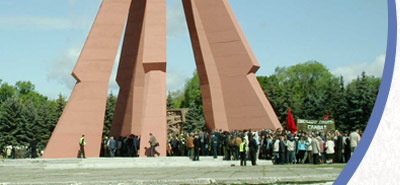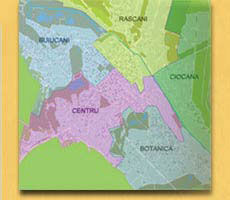

Orheiul Vechi
The word "Orhei" means "guarded place" in Hungarian. The old settlement Orhei was near another medieval city called Peshtere (cave). There you will find two monasteries delved in stones. A document dated 18 July 1617 was signed by two chief magistrates: one of the district Orhei - Aslan, and one of the district Peshtere - Dragun. A testimony of the existence of Peshtere like a city is the "notice" from 1602-1603 written in Peshtere by chief magistrate of the district Orhei. Another document shows that Peshtere was once called Movilova, what means Movila's.
The fair from Peshtere was annulled by Stephen Tomsha. Vasile Lupu Voivode gave the village Peshtere to Apostol Catargiul, his seneschal on 1 November 1639. The village Peshtere was plundered by the Cossacks at the end of the XVII century. The ruins of the city, two rupestral monasteries and lots of caves are the real proof that the place called Peshtere is the present-day village Butuceni. However, the year of Butuceni's (Peshtere's) foundation is not known.
In the caves of Butuceni, researchers have found terse signs that resemble the runic inscriptions of the medieval caves and monuments from Basarabi-Murfatlar near Constantsa, and monuments of first Bulgarian czardom.
The researchers V.Grosu and C.Vasilache have discovered 6 complexes of caves. The first complex has Bosia monastery and the third one has the monastery Butuceni. The complex four is named Holmul and the six one - Chiliori. The most important terse signs were found in the second and fifth complexes. A document from 1816 revealed that here was abbot the monk Victor. At the beginning of the XIX century amongst the hermitages of monks was mentioned and that of Peshtere. The hermitage Peshtere was closed in 1816 because of a quarrel between landowners. But it was destroyed in time because in our days you can't enter the monastery from the side of Raut like the monks once did. You can enter it through a gallery dugged from the side of the village. The architecture is of a famous sobriety and a evident severity. The church has a traditional division: the pronaos with an irregular form and an area of 36 square m, the nave is 6 X 4 m. The altar is the continuation of the nave. The diaconicon is digging behind the altar, here were kept clothes of the priests. The diggings in the walls show the place of the icons. In the middle was the iconostasis. The monastery has 12 cells. One of them is bigger, possibly where the abbot may have lived. The medium of the monasteries' cells is predominant ascetic.
There is another monastery in that rock at a distance of 1 km. The entrance is closed by big stones, marks of natural calamities. You can enter the monastery from the Raut. A rare beauty is hidden here.
The inscriptions from the entrance of the bigger cave reads: "This monastery was built by the God's slave Bosie, chief magistrate of Orhei, with his wife and children, in the honour of God for the absolution sins in 7183 (1675)." But it was rather rebuilt by him. Near the door of the church are the remains of an icon dating back to 1772. This is an indication that the monastery was opened at least 100 years after Bosie.
The wreath of the monastic complex is the church from the peak of the rock with the festival "Saint Marie." Today it is a museum.
These monasteries are a must visit, and you can listen to the voices of the rocks and the murmur of the river.
(Source: www.old.ournet.md)










